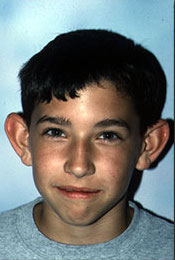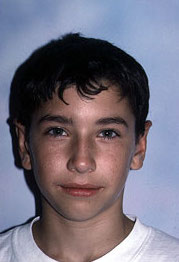Ear Surgery
Probably no other physical characteristic cries out for facial plastic surgery more than protruding ears.
Children, long the victims of cruel nicknames like “Dumbo” or “Mickey Mouse,” are the most likely candidates for otoplasty, but this surgery can be performed at any age after the ears have reached full size, usually around five to six years of age. Even if the ears are only mildly distorted, the condition can lead to self-consciousness and poor adaptation to school. When it comes to otoplasty, conventional wisdom is the earlier the better.
Adults may also benefit from this procedure, which improves self-esteem with relative ease. Often, adults choose this surgery in conjunction with other facial plastic surgical procedures. Not only is it possible to “pin back” ears, but ears can also be reshaped, reduced in size, or made more symmetrical.
If you are wondering how otoplasty can improve the way you look, you need to know how otoplasty is performed and what you can expect from this procedure.
Successful facial plastic surgery is a result of good rapport between patient and surgeon. Trust, based on realistic expectations and exacting medical expertise, develops in the consulting stages before surgery. Your surgeon can answer specific questions about your specific needs.
Is Otoplasty for You?
General good health and realistic expectations are prerequisites.
It is also important to understand the surgery. Otoplasty will not alter hearing ability. What is important for successful otoplasty is that the ears be in proportion to the size and shape of the face and head.
When considering otoplasty, parents must be confident that they have their child’s best interests at heart. A positive attitude toward the surgery is an important factor in all facial plastic surgery, but it is especially critical when the patient is a child or adolescent.
Adult candidates for otoplasty should understand that the firmer cartilage of fully developed ears does not provide the same molding capacity as in children. A consultation with a facial plastic surgeon can help parents decide what is best for their child, not only aesthetically, but also psychologically and physically. Timing is always an important consideration. Having the procedure at a young age is highly desirable in two respects: the cartilage is extremely pliable, thereby permitting greater ease of shaping; and secondly, the child will experience psychological benefits from the cosmetic improvement.
Making the Decision for Otoplasty
Your choice of a qualified facial plastic surgeon is of paramount importance.
During the consultation, the surgeon will examine the structure of the ears and discuss possibilities for correcting the problems. Even if only one ear needs “pinning back,” surgery will probably be recommended on both ears to achieve the most natural, symmetrical appearance.
After the surgeon and patient decide that otoplasty is indicated, your surgeon will discuss the procedure. Following a thorough medical history, your surgeon will explain the kind of anesthesia required, surgical facility, and costs. Typically, your surgeon will suggest a general anesthesia for young patients and a local anesthetic combined with a mild sedative for older children and adults. Under normal conditions, otoplasty requires approximately two hours.
Understanding the Surgery
Surgery begins with an incision just behind the ear, in the natural fold where the ear is joined to the head.
The surgeon will then remove the necessary amounts of cartilage and skin required to achieve the right effect. In some cases, the surgeon will trim the cartilage, shaping it into a more desirable form and then pin the cartilage back with permanent sutures to secure the cartilage.
In other instances, the surgeon will not remove any cartilage at all, using stitches to hold the cartilage permanently in place. After sculpting the cartilage to the desired shape, the surgeon will apply sutures to anchor the ear until healing occurs to hold the ear in the desired position.
What to Expect after the Surgery
Soft dressings applied to the ears will remain for a few days.
Most patients experience some mild discomfort. If you are accustomed to sleeping on your side, your sleep patterns may be disrupted for a week or so because you cannot put any pressure on the ear areas. Headbands are sometimes recommended to hold the ears in the desired position for two weeks after the surgery.
The risks are minimal. There will be a thin white scar behind the ear after healing. Because this scar is in a natural crease behind the ear, the problem of visibility is inconsequential. Anything unusual should be reported to the surgeon immediately.
Facial plastic surgery makes it possible to correct many facial flaws that can often undermine one’s self-confidence. By changing how you look, cosmetic surgery can help change how you feel about yourself.
FAQ on Otoplasty
Insurance does not generally cover surgery that is purely for cosmetic reasons. Surgery to correct or improve birth defects or traumatic injuries may be reimbursable in whole or in part. It is the patient’s responsibility to check with the insurance carrier for information on the degree of coverage.
Interested in learning more? Please contact the staff at riverside facial plastic surgery and sinus center about scheduling an appointment.


